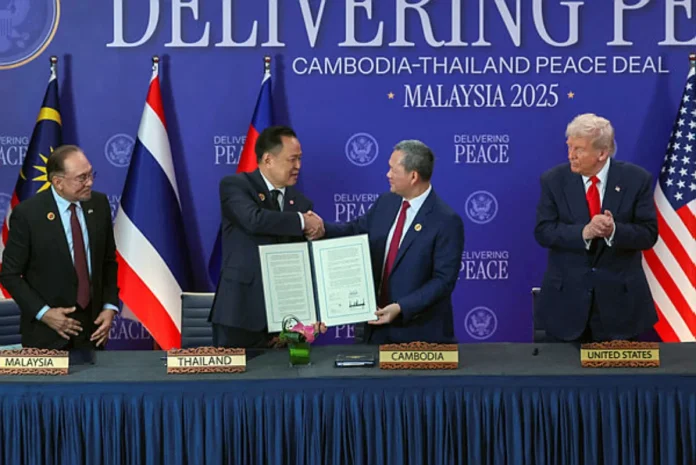Ceasefire offers diplomacy window but border tensions between Cambodia, Thailand could still threaten regional stability: Analysts
PETALING JAYA: The Kuala Lumpur Peace Accord may have grabbed global headlines, but experts caution it signals only a pause in hostilities and not a genuine peace breakthrough between Cambodia and Thailand, urging Malaysia to manage expectations carefully.
Nusantara Academy of Strategic Research senior fellow Prof Dr Azmi Hassan said the term “Kuala Lumpur Peace Accord”, widely used by international media, may not accurately reflect the agreement’s nature.
“The term was likely introduced by US President Donald Trump, but the correct name is the Kuala Lumpur Accord. It’s not a peace agreement – it’s a ceasefire and little has shifted since last May or July.”
Azmi also said Malaysia should not place too much emphasis on the accord’s symbolic value, adding that the unresolved border issue between Cambodia and Thailand could still pose risks to regional stability.
“It could backfire if border clashes were to break out again. However, if Trump’s involvement leads to a finalised border agreement, the accord could help position Malaysia as a reliable diplomatic partner.”
He also emphasised that Malaysia’s role should remain diplomatic and measured.
“If hostilities resume between Cambodia and Thailand, Malaysia should not be seen as responsible. The onus would lie with Trump, who brokered the accord.”
Meanwhile, Universiti Utara Malaysia geopolitical analyst Assoc Prof Dr Mohamad Faisol Keling said the Kuala Lumpur Peace Accord reflects the determination of both Cambodia and Thailand to resolve their conflict peacefully.
“The accord shows both sides’ willingness to prioritise stability and peace through diplomacy. Its success, however, depends on how committed both countries are to maintaining that peace.”
He said Malaysia and Asean’s diplomatic approach aligns with the region’s long-standing preference for peaceful conflict resolution.
“The agreement demonstrates Asean’s belief that diplomacy remains the best method for resolving disputes in Southeast Asia.”
On the question of US involvement, Faisol said Washington’s direct engagement in the region remains limited despite its historical presence.
“Since 1945, the US has maintained an interest in Southeast Asia, but direct involvement in regional conflicts is still unlikely.
“This region is not like the Middle East, which faces higher security threats.
“In this context, the US recognises the stability of Southeast Asia and trusts Malaysia as well as Asean’s diplomatic efforts to preserve peace in the region.”
Faisol also said the agreement could serve as a model for future regional conflict resolution mechanisms.
“The ‘middleman’ approach is not new. It has seen success before, such as Malaysia’s role in facilitating peace in the southern Philippines and ongoing efforts in southern Thailand.
“The United Nations’ peacekeeping framework operates on the same principle.”







